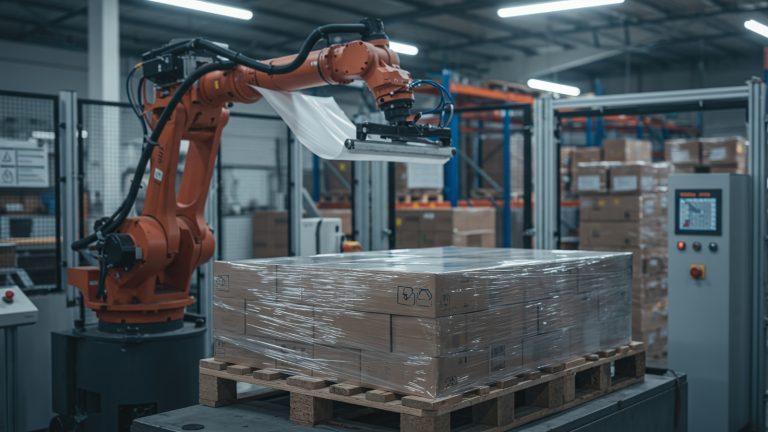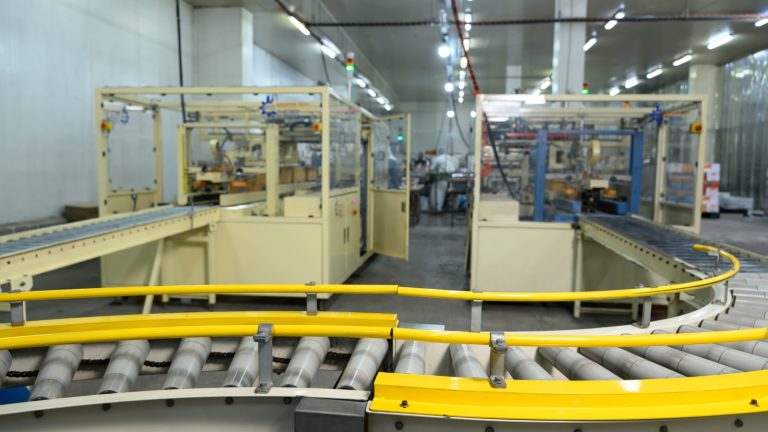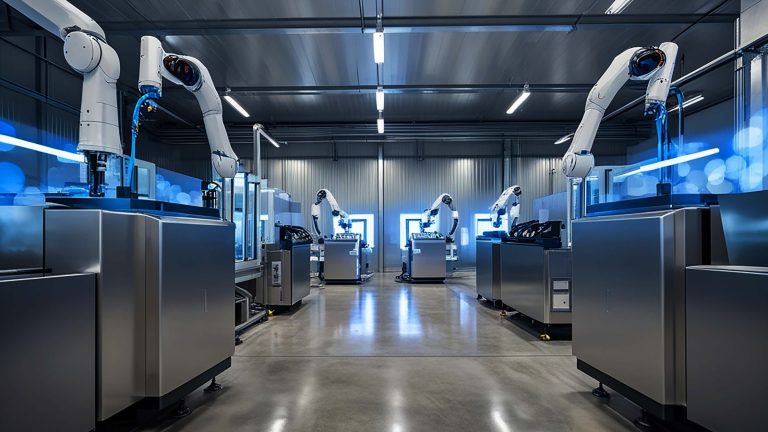With the growth of the Industry 4.0 concept, one aspect that has acquired extensive prominence in the industrial world is undoubtedly ‘factory automation’. Through the powers of advanced technologies such as Internet of Things (IoT), Artificial Intelligence (AI), and Robotics, this has evolved into one of the best tools modern manufacturers embrace to touch the horizons of productivity in their factories. With the Asia-Pacific region mastering the latter, it promises the highest Return on Investment rates for any manufacturing company that implements it.
In this article, we explore the top 10 benefits of factory automation for modern manufacturing.
What is the Role of Automation in Modern Manufacturing?

- Automation is the system for operationalising advanced machinery and technology to accomplish tasks with minimal human intervention.
- As modern manufacturers encountered many serious challenges, such as high production costs, labour shortages, and compliance issues regarding product quality, they were in pursuit of a method to reduce human errors, and that is where factory automation comes in.
- With automation in place, factories no longer confront difficulties in handling repetitive tasks. Since it reduces human errors, modern manufacturers can easily maintain a steady production throughout the year.
- Factory automation simply paves the way for manufacturers to increase their output by significant numbers.
What are the Benefits of Factory Automation?

Higher Productivity and Throughput
Factory automation is mainly used in the industrial world, as it makes machines work faster than humans. Also, the machines can function much longer, even without breaks. It is indeed the best benefit of automation, as this way, machinery can keep producing goods 24/7 and for all 365 days long. Unlike humans, automated machines take less time for production and every other task.
Another way it boosts productivity is that automated systems remove the necessity for idle time between tasks. If the operators need to, they can speed up production cycles by giving commands to the machines. It goes without saying that due to automation, factories can produce larger quantities in their production floors, saving time, resources and with heightened precision.
Consistent Product Quality and Fewer Defects
Manufacturing is a domain that gives more importance to the same level of accuracy and care when producing goods. This is where the factory automation supports keeping that promise as it is. When automation is in place, the manufacturers can give commands to the machines to follow exact instructions for the whole batch of production. This ensures every single product in the same batch comes out with the same product quality.
In another way, automation acts as the best weapon to fight against human mistakes, as its capabilities aid in keeping product quality at the same level. The automated systems are built with sensors and AI-driven inspection tools, which spot defects immediately and take corrective measures, saving time and removing the necessity for rework.
Reduced Operational and Labour Costs
Factory automation is where it puts the full stop to the need for manual labour. The end result? This directly helps lower payroll expenses. It does not mean that automation completely replaces human labour. There must be human intervention to direct the machines towards the correct path.
However, the beauty of automated machines is that they can accomplish tasks that once required a number of workers to complete. On one hand, it cuts costs for labour work; on the other hand, the speed of production and efficiency skyrocket.
As every task is pre-determined and scheduled, automated machines are an outstanding alternative to reduce waste, rework, and energy use, saving money on materials and maintenance.
Improved Safety and Ergonomics
The latter makes the machines involved in handling dangerous or tiring tasks, making the factory a safer place for workers. Lifting heavy objects, working with toxic materials, or dealing with high temperatures are no longer tasks for human workers. This will help decrease the potential for injuries and accidents in the workplace.
Even though these automated systems improve safety in the working environment for all the workers, they adhere to maintaining consistent working conditions. In a comfortable and risk-free factory, the employees can focus on more complex tasks such as problem-solving, supervision, and maintenance.
Real-Time Monitoring and Predictive Maintenance
The success of the modern factory automation lies in its ability to deploy sensors and smart systems to capture, configure, process and analyse real-time data. That is how the managers receive updated information on each machine, and they get the opportunity to comprehend how machines are performing. If the performances are not up to expectations, they can fix the problems before they become serious.
Plus, predictive maintenance supports planning out every repair in advance without leaving room for unexpected breakdown in the middle of production.
Flexibility and Scalability in Production
This offers the ability to make the necessary adjustments instantly to the production levels after analysing the market demand. According to the data, the operators can reprogram machines to align with the production requirements. Machines can make different products or change into new designs smoothly. This flexibility supports manufacturers in faster responses to market changes, while offering expansion opportunities for new markets.
Automation also makes scaling production easier, whether a company needs to produce more units or expand to new markets.
Enhanced Resource and Energy Efficiency
Unlike manual processes, automated systems are developed to utilise materials and energy more wisely and mindfully. As machines have the ability to measure, cut, and assemble parts precisely, it eliminates waste and saves raw materials.
With automation, factories can easily monitor and control their energy use, which eventually leads to lower electricity and fuel costs in the end.
Faster Time to Market
As the main objective of the automated machines is to do the productions quickly, constantly and with the same level of accuracy, it helps factories bring the products to the markets much faster. Automation can put the full stop to delays between production stages. Not to mention that this is what translates into shorter lead times.
This is where the modern manufacturing companies receive the potential to launch new products more quickly. As automation offers faster processes, manufacturers who embrace this technology can stay ahead of their competitors when it comes to introducing products.
Better Use of Human Skills and Workforce Upskilling
Repetitive work is another name for freezing talent. This signifies the automation’s capacity to make the workers focus on more skilled and creative tasks instead of doing the same task again and again. Since automation is coupled with AI, IoT and other advanced technologies, it is not easy to manage, maintain, and program automated machines without the right knowledge.
This is where the workers receive the opportunity to upskill themselves, improving their technical knowledge. It is actually a two-way victory for the companies and the workforce.
Competitive Advantage
Automation extends its helping hand towards modern manufacturing factories by offering a solid potential to compete in the market.
The latter combines speed, quality, and cost efficiency, which means the businesses that employ automation get the chance to deliver better products at lower costs and respond quickly to customer needs.
Cerexio-Powered MES for Overall Factory Automation

Cerexio’s Industry 4.0-driven Manufacturing Execution System is your perfect destination to boost productivity by automating every task from product planning, processing, warehousing, to supply chain. Since the Cerexio MES has a greater capacity to integrate with other systems like ERP, CRM, etc., it saves your costs, resources, time and boosts efficiency levels and productivity within a short time.
Factory Automation as the Best Solution for Modern Manufacturing Challenges

If you look into the success stories of many mega manufacturing enterprises around the world, you can see that each of them worships ‘automation’ as their secret weapon. This leaves something for you to think about! Why struggle with the growing manufacturing challenges when you can solve them easily with factory automation now?
FAQ about Factory Automation
The best example of factory automation can be found in an automated car assembly line. It is a collaborative automated machines workflow where they use robotic arms to weld, paint, and assemble car parts, while using Automated Guided Vehicles (AGVs) to transport materials. However, all of them are coordinated by Programmable Logic Controllers (PLCs) to ensure efficiency and precision throughout the production floors.
It is certainly possible to automate a factory completely without human workers. In the industrial world, a fully automated factories are known as a ‘lights-out factory’. At the moment, only China and Japan have fully automated factories, as it poses some challenges when it comes to practical implementations.
The 4 types are fixed, programmable, flexible, and integrated automation. Each of the automation types has a unique set of characteristics, and they can serve various production needs, volumes, and levels of complexity. According to the manufacturing requirements, the factories can select the best type for their production.
